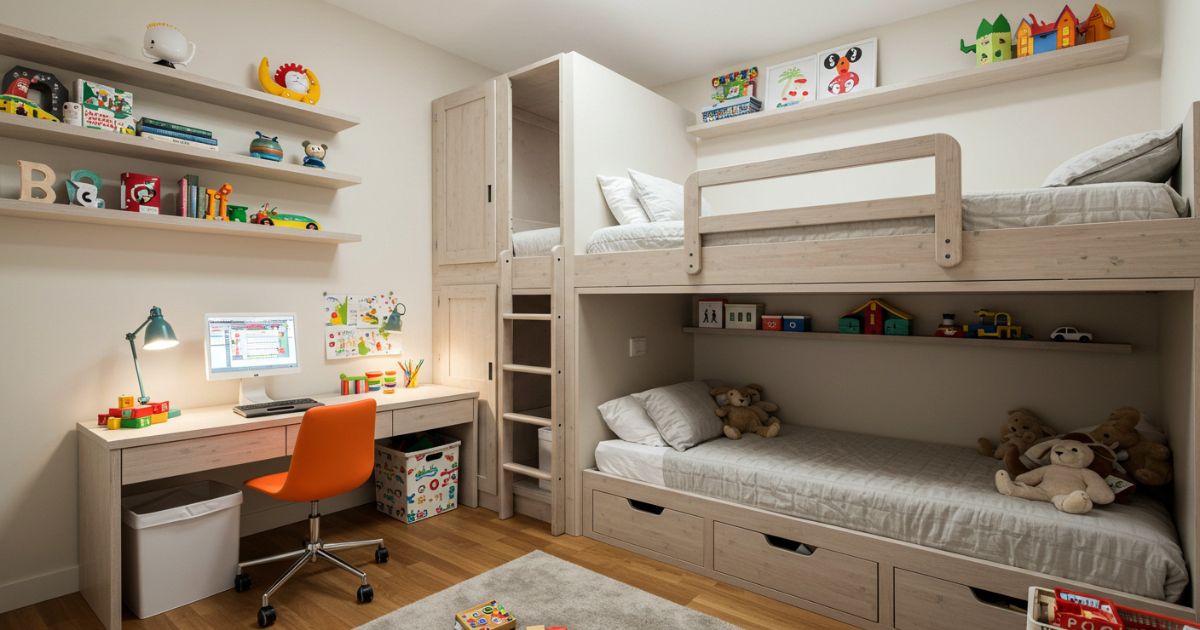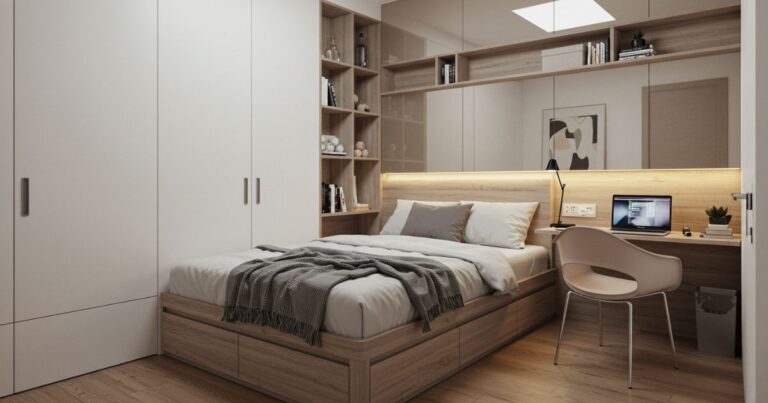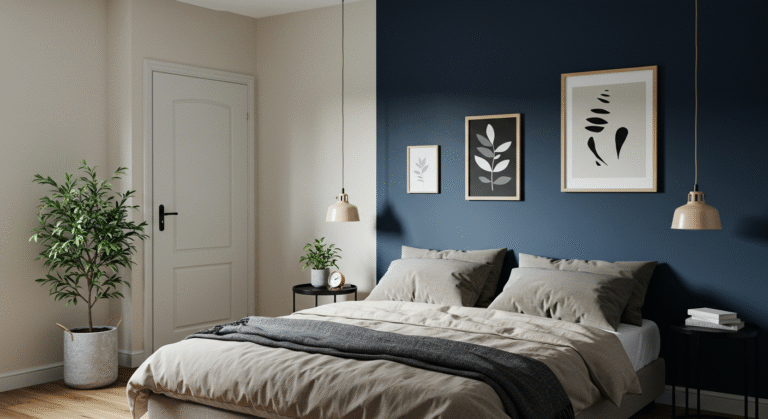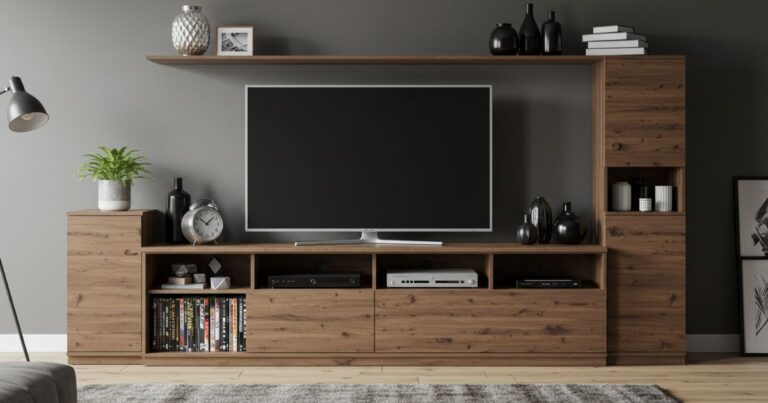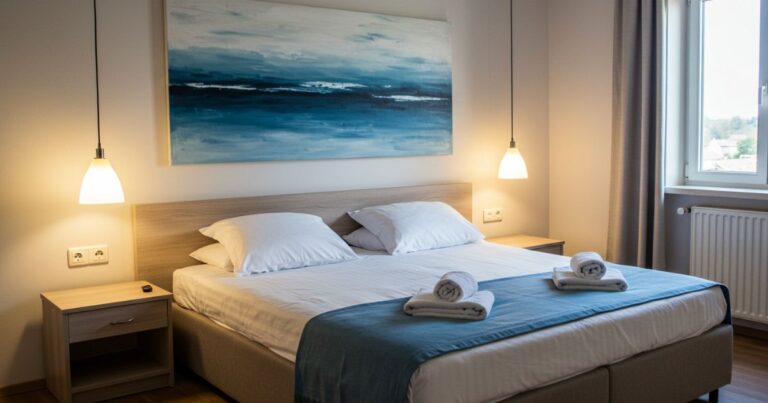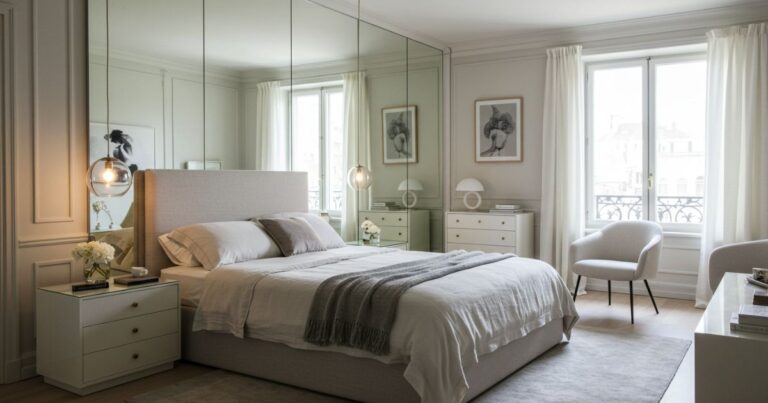Inspiring Small Shared Bedroom Ideas for Every Age and Space
Creating a shared bedroom can be a fun and rewarding challenge. Whether you’re designing a space for kids, siblings, or even adults, it’s all about balancing functionality with style. A shared room often requires creativity, thoughtful design, and clever solutions to ensure that both individuals feel comfortable, while also making the most of the limited space. In this article, we’ll explore inspiring ideas to make small shared bedrooms work for people of all ages, from toddlers to teenagers, and even adults.
1. Maximize Vertical Space
When dealing with a small room, vertical space becomes your best friend. Instead of spreading out, think about building upward. Lofted beds, bunk beds, and wall mounted shelves are fantastic solutions to keep the floor area open and spacious. Lofted beds are especially useful for maximizing the room’s square footage, providing a cozy area below for desks, toys, or storage.
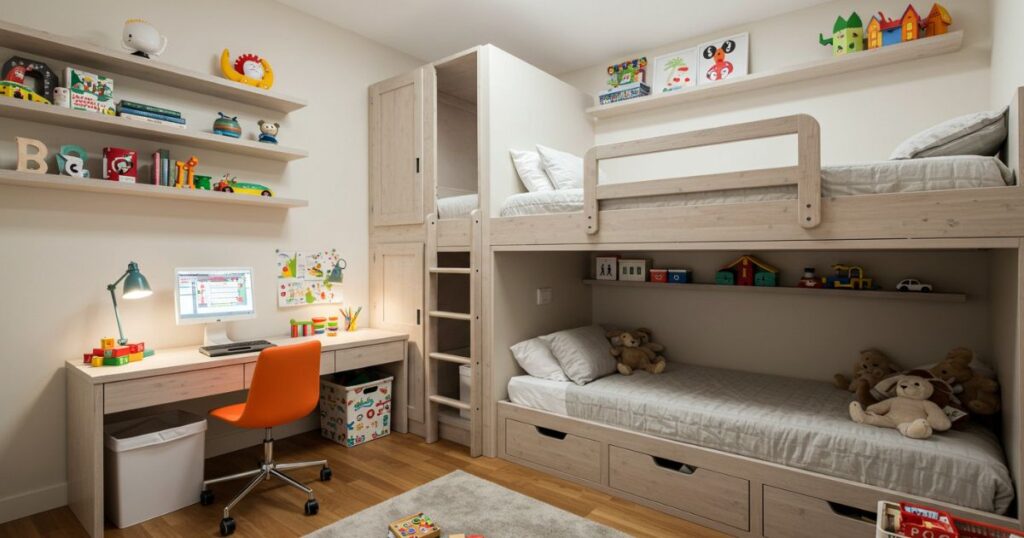
Bunk beds are another classic option for shared rooms, especially for siblings. Today, there are plenty of modern and stylish bunk bed designs available. Whether you choose traditional wooden frames or sleek metal designs, a well-designed bunk bed creates the sense of individual space while keeping the room organized.
Tip: For a more unique approach, consider a custom-built lofted bed with a play area or study nook beneath. This can provide a comfortable sleep space while leaving room for other activities.
2. Incorporate Personal Touches
A shared bedroom doesn’t mean that the personal style of each individual needs to be compromised. Personal touches can make the space feel more like home for everyone. Think about customizing the bed linens, wall art, and decorative accessories to reflect each person’s personality.
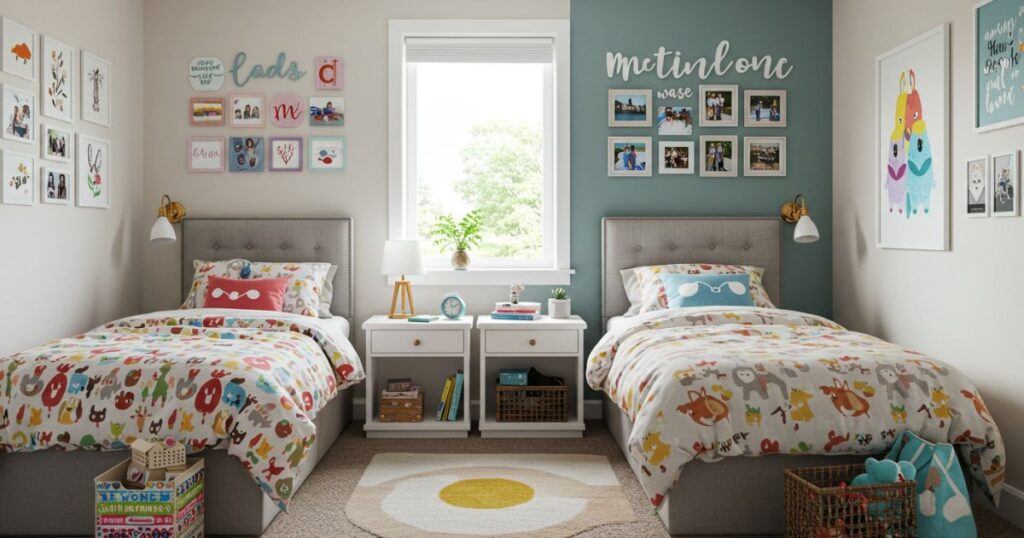
For kids, let each child pick out their own bedding, pillow colors, or wall posters. This way, both children have their own sense of ownership over the space while still maintaining a cohesive design. Teenagers may prefer more personalized decor such as posters, prints, or a collection of photos that bring their style to life.
Tip: To keep the room looking balanced, coordinate colors and themes while allowing each person to have a corner or section of the room that reflects their unique preferences.
3. Choose Space-Saving Furniture
When designing a small shared bedroom, multifunctional furniture becomes a game changer. Look for pieces that serve more than one purpose, such as storage beds, fold out desks, or multi-tiered shelving units. A bed with built-in storage can help minimize clutter, while a fold out desk is perfect for studying or working without taking up too much room.
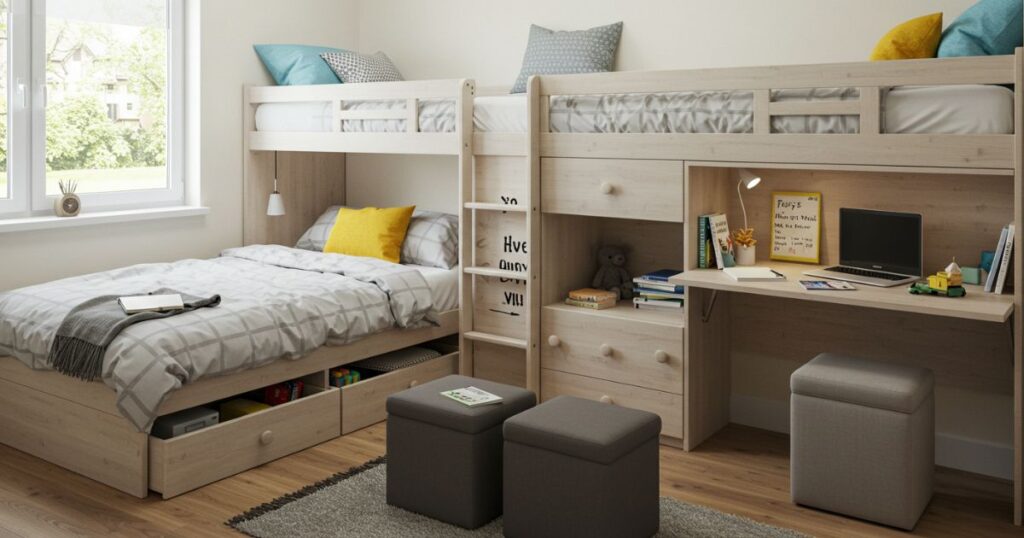
Storage ottomans or benches at the foot of the bed can also double as seating and additional storage. The key is to maximize every piece of furniture, making sure it contributes both to comfort and functionality.
Tip: Opt for furniture with a minimalist design to avoid overwhelming the room. Simple, clean lines will keep the space feeling open and fresh.
4. Create Separate Zones Within the Room
In a small shared space, it’s important to create some sense of separation between each person’s area. This can be done in a subtle way, such as through different bedding styles or furniture arrangements. Consider placing each bed at opposite ends of the room to create natural boundaries. Use rugs to visually separate the sleeping areas or create an intimate reading nook in one corner of the room.
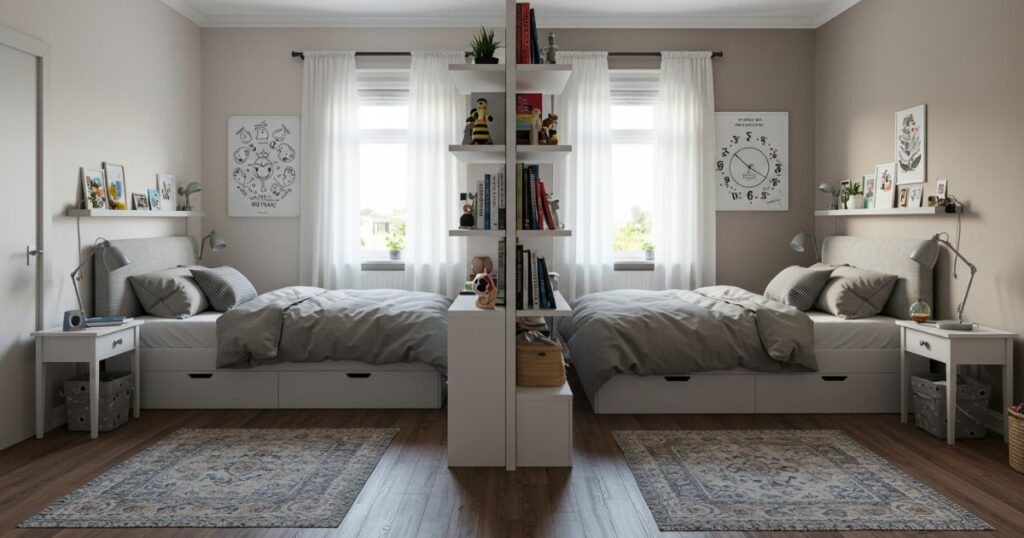
For a more obvious separation, use a lightweight room divider, curtain, or fabric screen. This will allow each person to have a little more privacy, especially if they are older and appreciate their own space. Some creative room dividers can also serve as storage, adding both functionality and style.
Tip: A subtle divider, such as a hanging curtain or a bookshelf, can be an effective way to give each person their own space without making the room feel too cramped.
5. Use Light Colors to Open Up the Space
Light, neutral colors are an excellent choice for small shared bedrooms. Soft whites, light grays, or pastel tones can help the room feel larger and more open. This is particularly important if the room lacks windows or has minimal natural light. If you do want to add color, consider soft blues, greens, or blush tones to keep the atmosphere serene without overwhelming the space.
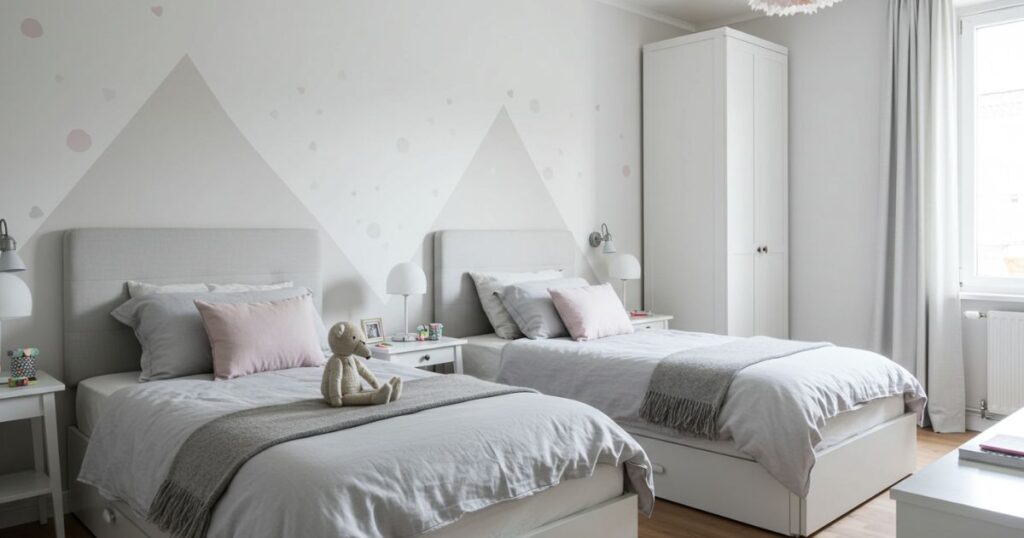
Additionally, the right colors can set the tone of the room. Lighter shades create a calming environment, which is especially useful for children’s rooms, where a peaceful sleeping area is essential.
Tip: Incorporate mirrors or metallic accents in the room’s design to further reflect light and create the illusion of more space.
6. Utilize Under-Bed Storage
Under-bed storage is a fantastic way to keep a shared room organized. Many beds come with built-in storage drawers, or you can add storage bins underneath for extra bedding, clothes, or toys. This can help free up closet space and keep clutter hidden away.
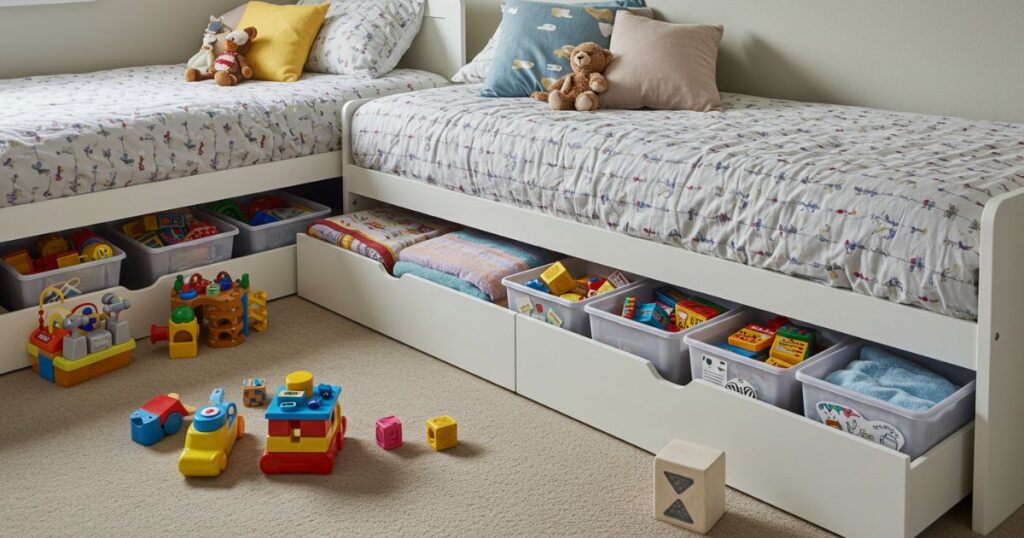
For kids’ rooms, under bed storage can also be a place for toys, books, or art supplies. For adults, consider under bed bins for seasonal clothing or extra linens. Adding a bed skirt can also help conceal the storage and keep the space looking neat.
Tip: Use clear storage bins so that it’s easy to find what you need without having to dig through everything. Alternatively, colorful bins can add a playful touch to the room.
7. Incorporate Multi-Functional Walls
If you’re really tight on space, consider using the walls as a functional part of the room. Wall mounted shelves are great for books, decor, or even small storage baskets. You can also hang a wall mounted desk or fold out desk that tucks away when not in use. Pegboards or hooks are useful for hanging bags, hats, or even small baskets to keep everyday items organized.
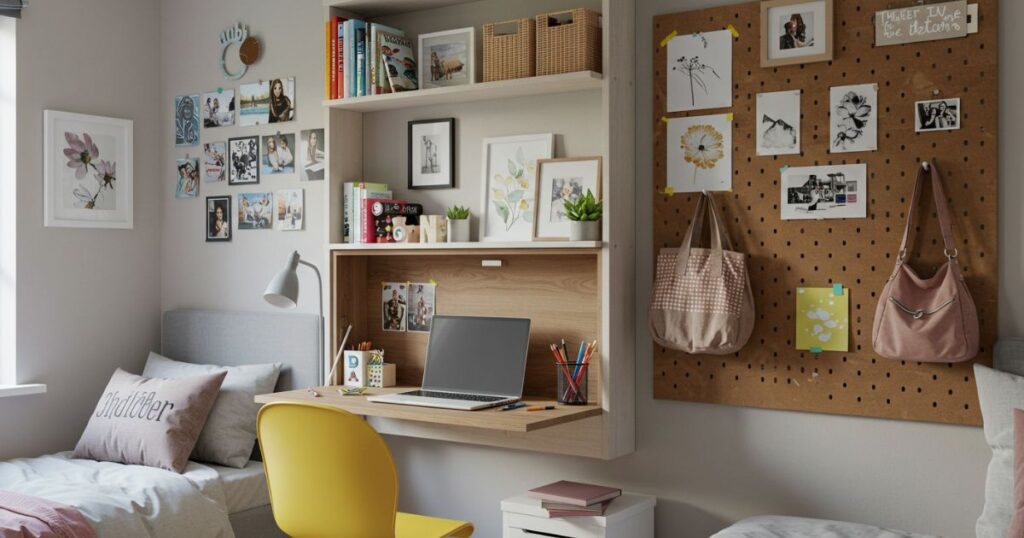
Another creative wall solution is to use magnetic paint or chalkboard paint. This allows for interactive surfaces for kids to draw on or hang up notes and artwork.
Tip: Choose wall-mounted furniture that can be folded up when not in use to maximize space and keep the room neat.
8. Consider the Ceiling for Extra Storage
In small rooms, every inch of space counts, and this includes the ceiling. Hanging baskets or a ceiling mounted rack can provide additional storage options for items like bags, hats, or small toys. You could also add a hanging rod near the ceiling to store seasonal clothing, freeing up space in the closet.
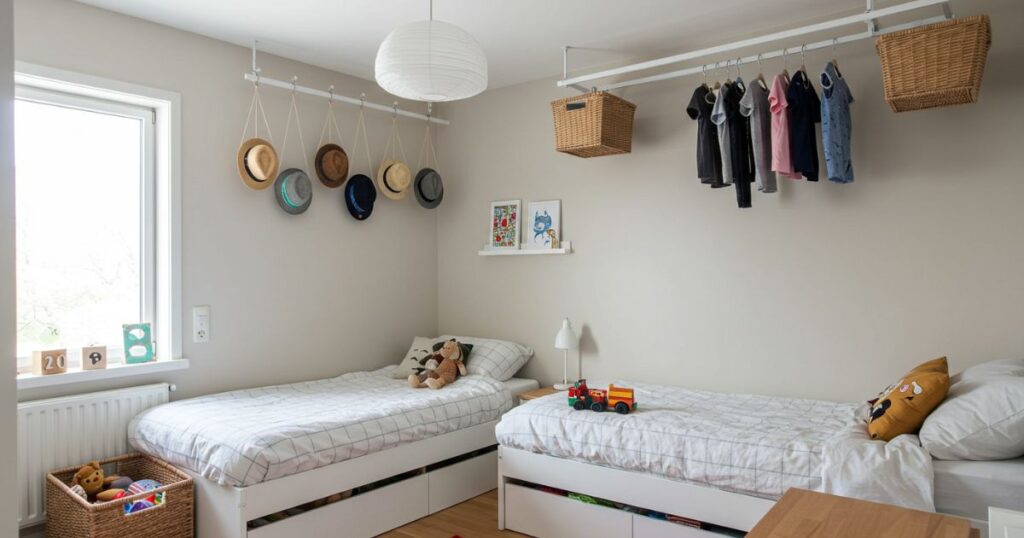
Incorporating hanging light fixtures with adjustable heights can also contribute to the room’s overall aesthetic and save valuable space on tables or desks.
Tip: Be mindful of headspace when using ceiling storage, especially in rooms with low ceilings.
FAQs About Small Shared Bedroom Ideas
Q: How can I make a shared bedroom work for different ages?
A: When designing a shared bedroom for different age groups, the key is to balance individual needs with shared space. For younger children, focus on playful, colorful designs with areas for play and sleep. For teens or adults, create more private areas using dividers or personalized decor. Consider incorporating multi-functional furniture and neutral color schemes to ensure everyone has enough personal space.
Q: What are some storage solutions for a shared small bedroom?
A: Storage solutions for a small shared bedroom include utilizing under-bed storage, opting for multi-functional furniture like storage benches and lofted beds, and incorporating wall-mounted shelves or hooks. Additionally, storage ottomans, fold-out desks, and built-in cabinets can maximize space and keep the room tidy.
Q: How do I create privacy in a shared bedroom?
A: To create privacy in a shared room, consider using room dividers, curtains, or even open shelving as a subtle barrier between beds. You can also arrange the furniture to keep beds at opposite ends of the room or use soft textiles like rugs to define each person’s space.
Q: How do I make a small room feel larger?
A: Lighter color palettes, such as soft whites, pastels, or light grays, can make a room feel larger. Additionally, mirrors and reflective surfaces can help bounce light around the room. Multi-functional furniture, such as lofted beds and fold out desks, will also create an open, spacious feel.
Q: How do I personalize a shared bedroom?
A: To personalize a shared room, allow each individual to choose their bedding, artwork, or decorative accessories. Using coordinated colors can help create harmony, while also allowing each person to add personal touches. This way, the room feels like a shared space but still reflects everyone’s unique style.
Final Thoughts
Designing a small shared bedroom can be a creative and rewarding experience. By maximizing vertical space, incorporating multifunctional furniture, and making clever use of walls and ceilings, you can transform a cramped room into a cozy, functional space for everyone. Whether you’re designing for children, teens, or adults, thoughtful organization and personal touches are key to creating a shared bedroom that feels both comfortable and stylish.
